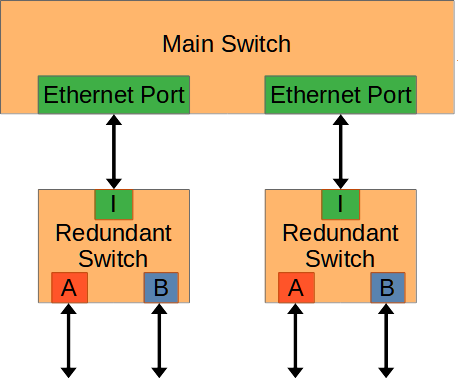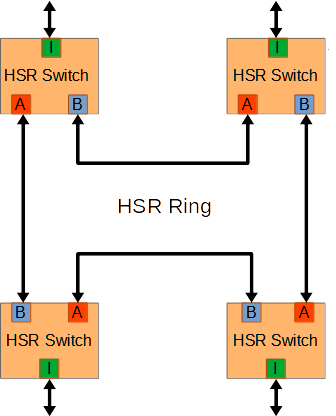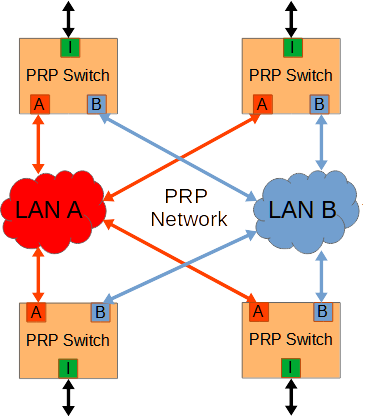The HSR- PRP line card extends the Raptor platform to incorporate three port redundant switches/interfaces (RedBoxes or Red for short) which can be configured in different HSR/PRP modes.

Port-I is connected to the main switch (a.k.a. Gigabit / Extreme Ethernet ports). Port-A and Port-B are the redundant switch ports to connect to other redundant ports. Each redundant switch is represented by a logical interface (a.k.a redundant interface or RED1 or RED2) that is used for configuration and statistics.
The HSR- PRP implementation adds zero failover time hardware redundancy. To achieve that, the following is implemented:
- A packet is sent to the network over the Port-I. The redundant switch makes two copies and send them over the Port-A and Port-B.
- The redundant switch will only forward the first copy of a packet that it receives on Port-A or Port-B to the Port-I and discards the second copy of the packet.

